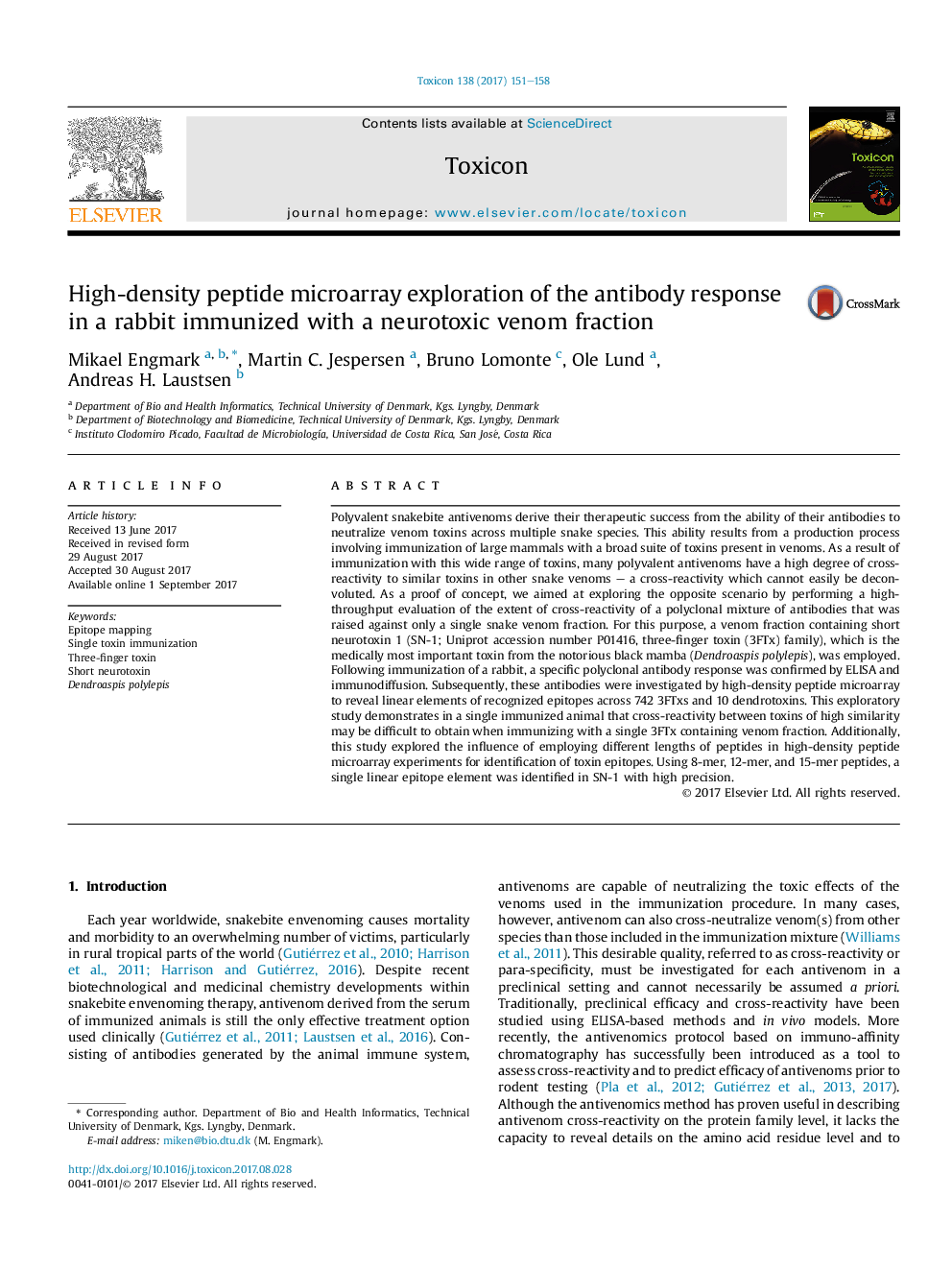| کد مقاله | کد نشریه | سال انتشار | مقاله انگلیسی | نسخه تمام متن |
|---|---|---|---|---|
| 5519216 | 1544098 | 2017 | 8 صفحه PDF | دانلود رایگان |
- Antiserum cross-reactivity may be limited when immunizing with a single neurotoxin.
- Antibody-toxin binding may be lost upon substitution of one toxin epitope residue.
- Linear epitope mapping results are consistent when using different peptide lengths.
Polyvalent snakebite antivenoms derive their therapeutic success from the ability of their antibodies to neutralize venom toxins across multiple snake species. This ability results from a production process involving immunization of large mammals with a broad suite of toxins present in venoms. As a result of immunization with this wide range of toxins, many polyvalent antivenoms have a high degree of cross-reactivity to similar toxins in other snake venoms - a cross-reactivity which cannot easily be deconvoluted. As a proof of concept, we aimed at exploring the opposite scenario by performing a high-throughput evaluation of the extent of cross-reactivity of a polyclonal mixture of antibodies that was raised against only a single snake venom fraction. For this purpose, a venom fraction containing short neurotoxin 1 (SN-1; Uniprot accession number P01416, three-finger toxin (3FTx) family), which is the medically most important toxin from the notorious black mamba (Dendroaspis polylepis), was employed. Following immunization of a rabbit, a specific polyclonal antibody response was confirmed by ELISA and immunodiffusion. Subsequently, these antibodies were investigated by high-density peptide microarray to reveal linear elements of recognized epitopes across 742 3FTxs and 10 dendrotoxins. This exploratory study demonstrates in a single immunized animal that cross-reactivity between toxins of high similarity may be difficult to obtain when immunizing with a single 3FTx containing venom fraction. Additionally, this study explored the influence of employing different lengths of peptides in high-density peptide microarray experiments for identification of toxin epitopes. Using 8-mer, 12-mer, and 15-mer peptides, a single linear epitope element was identified in SN-1 with high precision.
Journal: Toxicon - Volume 138, November 2017, Pages 151-158
